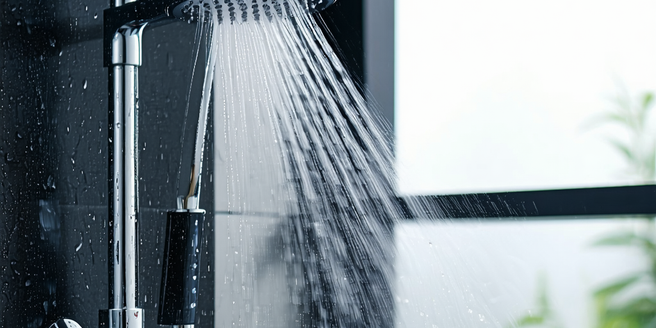Water-saving Fixtures Investment

Understanding Water-Saving Technology
Water-saving technology has evolved to become an integral part of sustainable living. These technologies include low-flow showerheads, dual-flush toilets, and smart irrigation systems. By understanding how these devices function, users can optimize their benefits, conserve water, and reduce utility bills. Low-flow fixtures, for example, are designed to limit water flow without compromising performance, ensuring that daily tasks like showering or washing hands consume less water. Dual-flush toilets allow different flush volumes for liquid and solid waste, significantly cutting water usage. Smart irrigation systems adjust watering schedules based on weather conditions, preventing overwatering. Embracing these technologies not only leads to reduced water consumption but also helps in promoting environmental sustainability. The adoption and understanding of water-saving technologies are crucial steps towards responsible water use.
The Environmental Impact of Reducing Water Use
Reducing water use has a profound impact on the environment. Water is a finite resource, and the over-extraction can lead to detrimental effects on ecosystems, including habitat loss and reduced biodiversity. By using water-saving fixtures, households and businesses can significantly cut down on water consumption, alleviating the pressure on local water sources and reducing the energy required for water heating and processing. Less water usage decreases the demand on wastewater facilities, thereby lowering their environmental footprint. Moreover, conserving water helps in maintaining the natural flow of rivers and wetlands, crucial for supporting wildlife. By understanding and implementing water-saving practices, individuals can contribute to a more sustainable future, ensuring that clean water remains accessible for both current and future generations.
Selecting the Right Fixtures for Your Home
Choosing suitable water-saving fixtures for your home is essential for maximizing efficiency and conservation. Start by assessing your home’s water usage patterns and identifying areas where you can save the most. For bathrooms, consider installing low-flow faucets and showerheads, which can drastically reduce water consumption without sacrificing comfort. In the kitchen, opt for a water-efficient dishwasher and aerators on taps to minimize wastage. Additionally, smart outdoor irrigation systems can help manage water use effectively in gardens. When selecting fixtures, look for products with a WaterSense label, which certifies that they meet the Environmental Protection Agency’s water efficiency criteria. By selecting and installing the right fixtures, homeowners can save water, lower utility bills, and make a positive impact on the environment.
Cost-Benefit Analysis of Water-Saving Investments
Investing in water-saving fixtures requires an initial cost, but the long-term benefits often outweigh these expenses. A cost-benefit analysis can help in understanding the financial savings linked to reduced water bills and increased property value. For instance, while low-flow showerheads and toilets may have upfront costs, they can significantly cut water usage, leading to substantial savings over time. Smart irrigation systems reduce outdoor water waste, further lowering expenses. Additionally, water-efficient homes often appeal to eco-conscious buyers, enhancing resale value. Many regions offer rebates and incentives for installing water-saving fixtures, reducing initial costs. By evaluating the long-term savings against the initial investment, homeowners and businesses can make informed decisions, ensuring both financial and environmental returns.
Installation Tips for Maximum Efficiency
Proper installation of water-saving fixtures is crucial for achieving maximum efficiency. Begin by following the manufacturer’s instructions carefully to avoid leaks and ensure optimal performance. When replacing existing fixtures, make sure to fit the new models securely to prevent any drips or water loss. For those installing low-flow showerheads or faucets, check compatibility with current plumbing to prevent pressure issues. Hiring a professional plumber for complex installations can also ensure optimal operation and longevity. In outdoor spaces, correctly set the smart irrigation system’s timer and sensors to account for weather changes, scheduling watering only when necessary. Regularly inspect all installations for wear and tear, as timely maintenance can prevent future water waste. By following these tips, users can ensure their water-saving fixtures function effectively.
Case Studies of Successful Water-Saving Implementations
Examining successful case studies of water-saving implementations can offer valuable insights. One notable example is the city of Las Vegas, which has saved billions of gallons through significant investments in technology and public education programs. The city installed advanced irrigation systems and offered incentives for xeriscaping, leading to a significant decrease in residential water use. Another example is the dual-flush toilets and low-flow showerhead installations at a major hotel chain, reducing overall water consumption by over 30%. These real-world implementations showcase the significant impact of water-saving technologies, not only in large-scale urban environments but also in private residential settings. Understanding these case studies empowers individuals and communities to tailor similar strategies in their own contexts, contributing to broader environmental sustainability efforts.